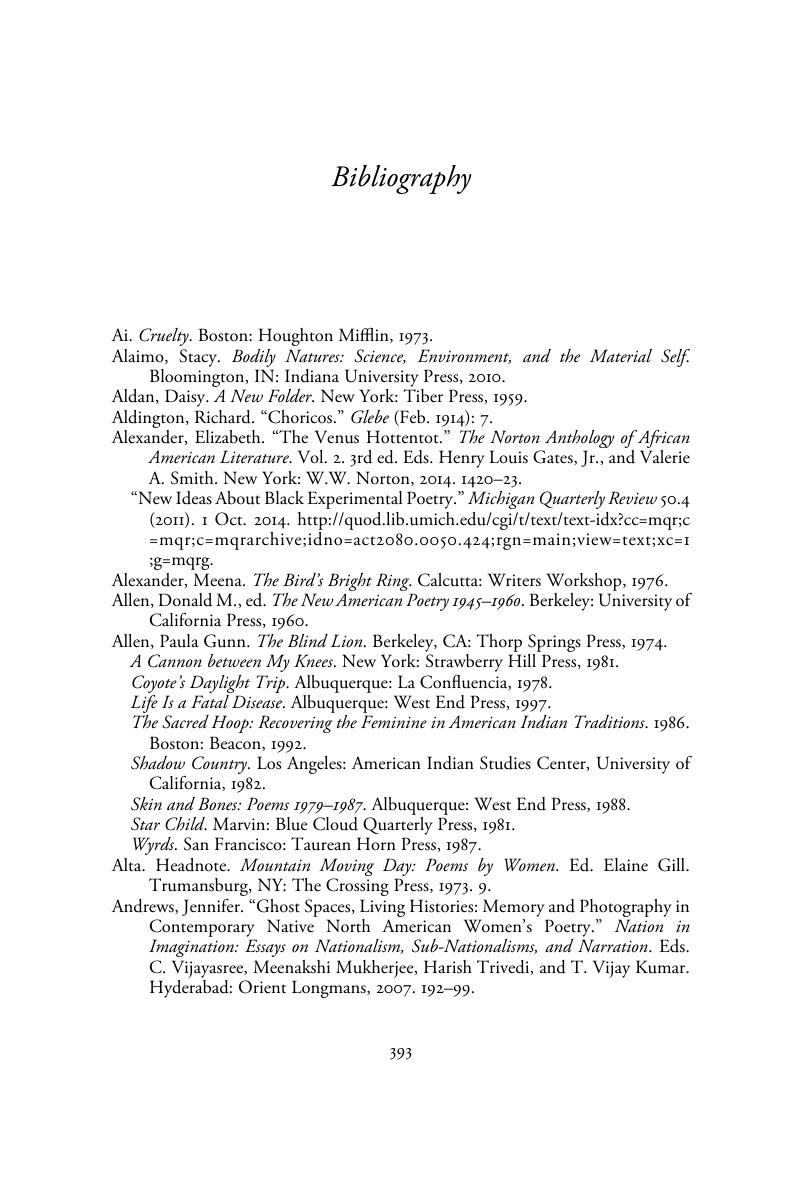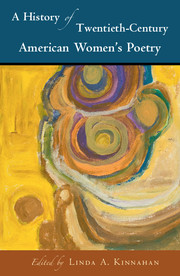Book contents
Bibliography
Published online by Cambridge University Press: 05 June 2016
Summary

- Type
- Chapter
- Information
- A History of Twentieth-Century American Women's Poetry , pp. 393 - 436Publisher: Cambridge University PressPrint publication year: 2016



